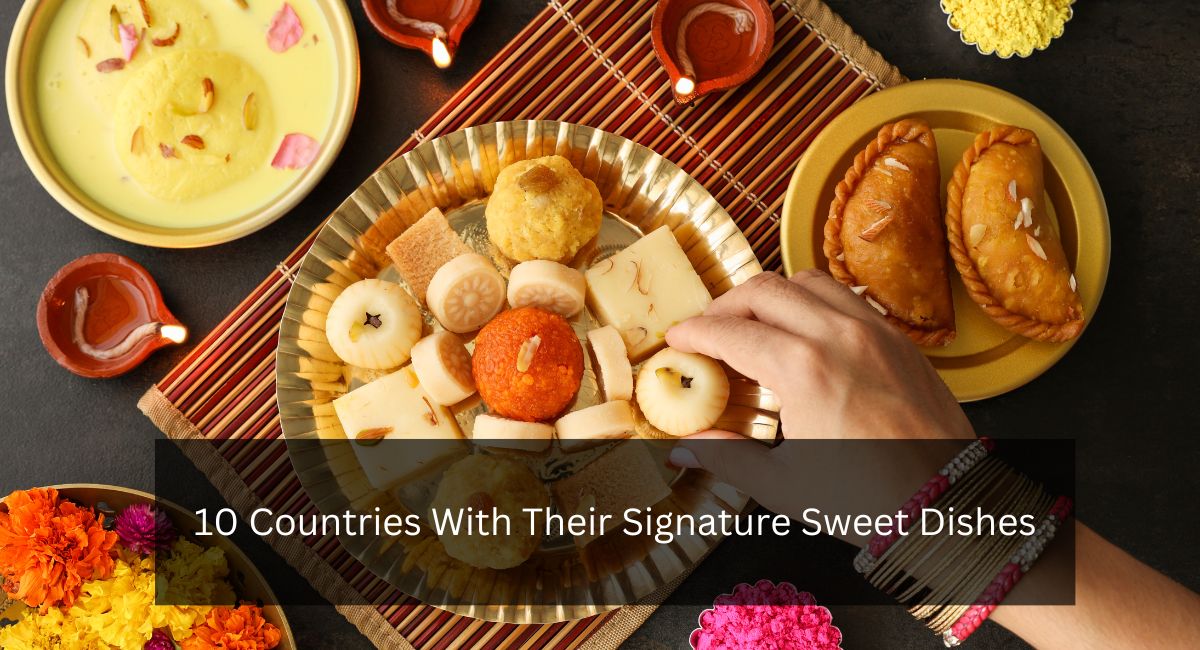Begin with an engaging introduction about the universal love for sweet dishes. Highlight how every culture has its unique take on desserts, which not only offers a taste of sweetness but also a glimpse into their traditions and history.
1. France – Crème Brûlée: Discuss the elegance and simplicity of Crème Brûlée. Originating from France, this dessert is known for its rich custard base and a contrasting layer of hard caramel on top.
2. Italy – Tiramisu: Explore the layers of coffee-soaked ladyfingers and mascarpone cheese that define Tiramisu. Mention its origins in Veneto, Italy, and its worldwide popularity.
3. Japan – Mochi: Introduce readers to Mochi, a sweet rice cake. Talk about its chewy texture, various fillings (like sweet red bean paste), and its cultural significance during Japanese New Year.
4. India – Gulab Jamun: Describe Gulab Jamun, a beloved Indian sweet made from milk solids, deep-fried and soaked in a sweet syrup. Highlight its presence in almost every Indian celebration.
5. Turkey – Baklava: Delve into the layers of filo pastry, filled with chopped nuts, and sweetened with syrup or honey that make up Baklava, a rich, sweet pastry that is a staple in Turkish cuisine.
6. Belgium – Belgian Chocolate: Belgian chocolates are renowned globally. Discuss the quality and variety of Belgian chocolates, including pralines and truffles.
7. USA – Apple Pie: Talk about Apple Pie as an American classic, often associated with American culture and identity. Mention the varieties and the common saying, “as American as apple pie.”
8. Mexico – Churros: Explain how Churros, deep-fried dough coated with sugar and cinnamon, are a popular treat in Mexico, often served with hot chocolate or dulce de leche.
9. Portugal – Pastel de Nata: Introduce Pastel de Nata, a Portuguese egg tart pastry, originating from Lisbon. Describe its creamy filling and flaky crust.
10. Australia – Lamington: End with Lamington, a traditional Australian dessert. Describe this sponge cake coated in chocolate sauce and rolled in desiccated coconut, often filled with cream or jam.
Conclusion: Conclude by reiterating the joy of exploring different cultures through their desserts. Encourage readers to try these sweet dishes to experience a piece of each country’s heritage and tradition.
Remember, a good blog post not only informs but also entertains and engages the reader. Include high-quality images of each dessert, and if possible, add personal anecdotes or interesting facts to make the blog more relatable and enjoyable to read.
-
15 Big Us Cities You Could Buy House Even If You Make Less Than 100,000$

Realtor.com has identified 15 sprawling US metropolises where the income required to buy a home is surprisingly low. A substantial number of the budget-friendly urban … Read more
-
DIY Smart Home Hacks

Imagine a world where your lights turn on as you walk in the door, your coffee starts brewing before you even wake up, and you … Read more
-
Unique Glamping Experiences Across the US

Imagine waking up to a breathtaking sunrise over a vast desert landscape, or drifting off to sleep with the gentle sway of a treetop cabin … Read more
